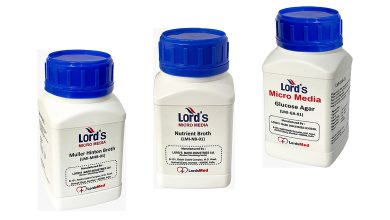Healthcare & Diagnostics: Game Plan 2022

The coming year is going to herald a boom for the Indian healthcare industry. By Jatin Mahajan, MD, J Mitra & Co
Healthcare is the largest service sector of the Indian economy, providing access to quality healthcare for the 1.3 billionplus population. The Indian healthcare industry was growing at a CAGR of approximately 23 per cent and expected to reach a figure of $372 billion (roughly Rs 27,90,000 crore) by 2022. Various reports by the Niti Aayog, Invest India, and IBEF point towards a very robust growth for the industry, especially in the post-pandemic scenario. There is a growing distrust towards China as a global supplier of reliable healthcare products. As a result, the focus is shifting towards India as the most viable alternative. The fact that we are producers of two global covid vaccines is a key influencing factor.
The pandemic has brought an altogether renewed focus on health and preventive healthcare. The postpandemic healthcare environment will be very different from the prepandemic environment because of changing priorities, mindsets, and behaviours. The understanding of the current healthcare scenario has highlighted the critical thrust areas and the resultant growth drivers. Various promising investment opportunities exist in segments such as hospitals, medical devices and equipment, health insurance, clinical trials, telemedicine, and medical tourism.
The healthcare sector is growing incredibly due to its increasing coverage, increased spending by public and private players, and quality services. The Indian Government has increased its healthcare allocation from 1.2 per cent to 1.8 per cent of the GDP in the last budget. As a result, there is a growing demand for implementing public-private partnership models in India’s healthcare sector. Driven by Make in India and Aatmanirbhar Bharat initiatives, Niti Aayog and Invest India are two key Government organisations that are aggressively focussing on driving investment for the Indian healthcare industry.
The hospital industry accounts for 80 per cent of the Indian healthcare market. It is witnessing a considerable investor demand from both global and domestic investors. As a result, the hospital industry will reach $132 billion by 2023 from $61.8 billion in 2017, growing at 16-17 per cent CAGR. Various hospital projects are coming up in tier-II and tier-III cities and include renowned organisations like Apollo Hospitals, Columbia Asia, Manipal Hospitals, Max Healthcare, Medanta, and Narayana Health. There is growing investor interest in healthcare post the pandemic, and leading hospital chains Cloud Nine Hospitals, Medanta and Park Group — are seeking up to Rs 6,300 crore through the IPO route. Shares of Max Hospitals and Apollo Hospitals have gained 40-50
per cent in the last 3-4 months.
The medical devices market in India stood at Rs 77,539 crore in 2020. It is likely to grow at 35 per cent CAGR from 2020 to 2025 (IBEF report). The government has taken steps for the growth and proliferation of the sector in the country. It recognised the medical devices segment as a sunrise sector under the Make in India campaign in 2014. Accordingly, India has initiated schemes to strengthen the segment – which includes boosting research and development and augmenting manufacturing through the 100 per cent FDI route.
India holds tremendous potential in the IVD segment and a significant sway in the global diagnostics industry. India is the international centre for frugal medical devices engineering, and India is also among the leading exporters of IVD solutions across the world. The opportunities, therefore, in this segment are tremendous. The Indian IVD market is likely to reach $2 billion in 2026, from $1.3 billion currently. The focus of the Indian IVD companies is on creating an innovation-driven ecosystem for resource-poor settings, addressing the need for precision and reliability, domestic production (selfreliant), affordability, and reaching closer to point-of-care. Another growth area within IVD is molecular diagnostics, e.g., RT PCR Test for covid. In addition, bacterial and viral epidemics, demand for POCD, and evolving technology are driving the growth of this segment.
India’s relative cost competitiveness and availability of skilled labour are also making it an increasingly favoured destination for medical tourism. The Indian medical tourism market is likely to grow from its current size of $3 billion to $7-8 billion by 2020. Health insurance accounts for 20 per cent of the non-life insurance business, making it the 2nd most extensive portfolio. The premium income has been growing at over 16 per cent.
Medical devices and equipment manufacturing, expansion of diagnostic and pathology centres, and miniaturised diagnostics have high growth potential. In addition, tech advancements such as AI, wearables, and other mobile technologies, along with the Internet of Things, also offer numerous avenues for investment. The coming year seems to herald a boom for the Indian healthcare industry and is likely to result in a win-win situation for the country, including healthcare providers and healthcare-seekers.




